
- •Course of lectures «Contemporary Physics: Part2»
- •Molecular Bonds
- •Molecular Bonds
- •Molecular Bonds
- •Molecular Bonds
- •Molecular Bonds
- •Molecular Bonds
- •Molecular Bonds
- •Energy States and Spectra of Molecules
- •Energy States and Spectra of Molecules
- •Energy States and Spectra of Molecules
- •Energy States and Spectra of Molecules
- •Energy States and Spectra of Molecules
- •Energy States and Spectra of Molecules
- •Energy States and Spectra of Molecules
- •Energy States and Spectra of Molecules
- •Bonding in Solids
- •Bonding in Solids
- •Bonding in Solids
- •Bonding in Solids
- •Bonding in Solids
- •Free-Electron Theory of Metals
- •Free-Electron Theory of Metals
- •Free-Electron Theory of Metals
- •Free-Electron Theory of Metals
- •Free-Electron Theory of Metals
- •Free-Electron Theory of Metals
- •Band Theory of Solids
- •Band Theory of Solids
- •Band Theory of Solids
- •Electrical Conduction in Metals,
- •Electrical Conduction in Metals,
- •Electrical Conduction in Metals,
- •Electrical Conduction in Metals,
- •Electrical Conduction in Metals,
- •Electrical Conduction in Metals,
- •Superconductivity
- •Superconductivity

Course of lectures «Contemporary Physics: Part2»
Lecture №12
Molecules and Solids. Molecular Bonds.
Energy States and Spectra of Molecules.
Bonding in Solids. Free-Electron Theory of
Metals. Band Theory of Solids. Electrical
Conduction in Metals, Insulators, and
Semiconductors. Semiconductor Devices.
Superconductivity.
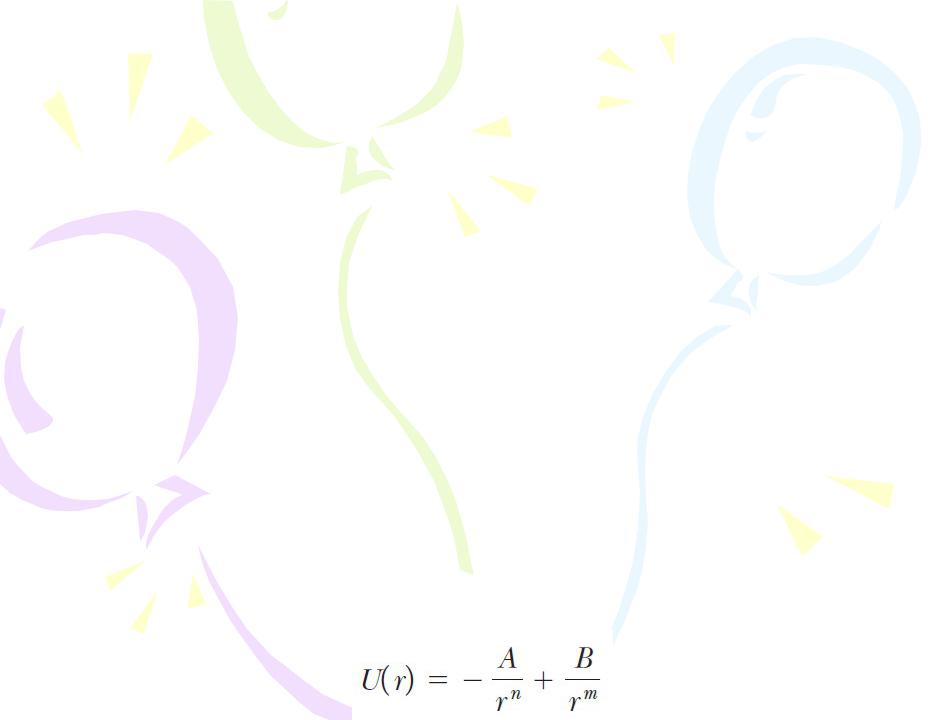
Molecular Bonds
A potential energy function that can be used to model a molecule should account for two known features of molecular bonding:
1. The force between atoms is repulsive at very small separation distances. When two atoms are brought close to each other, some of their electron shells overlap, resulting in repulsion between the shells. This repulsion is partly electrostatic in origin and partly the result of the exclusion principle. Because all electrons must obey the exclusion principle, some electrons in the overlapping shells are forced into higher energy states and the system energy increases as if a repulsive force existed between the atoms. 
2. At somewhat larger separations, the force between atoms is attractive. If that were not true, the atoms in a molecule would not be bound together.
Taking into account these two features, the potential energy for a system of two atoms can be represented by an expression of the form
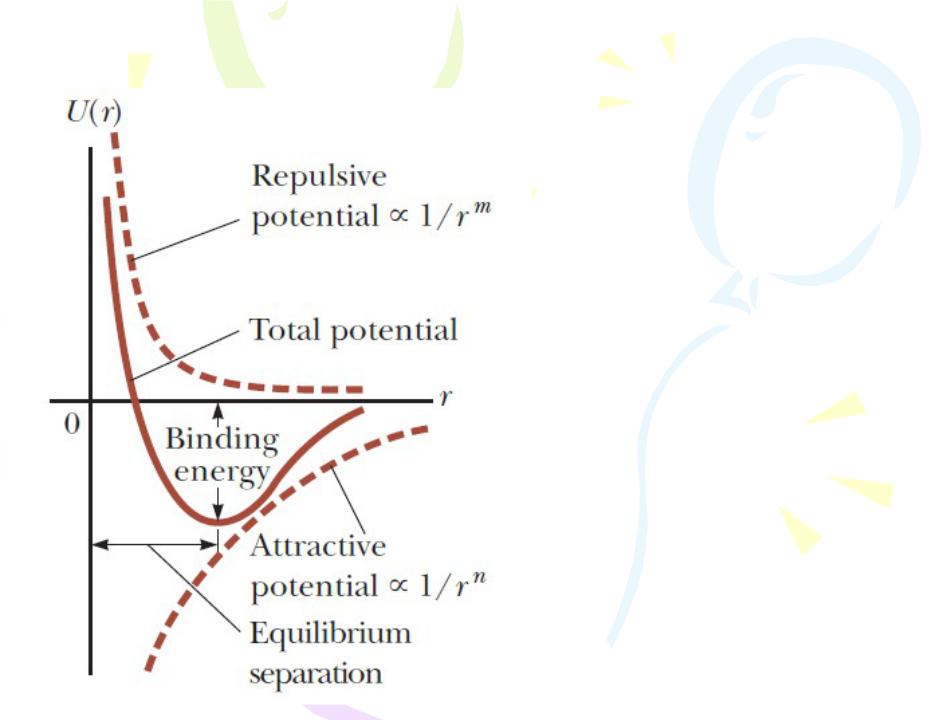
Molecular Bonds
Potential energy versus internuclear separation distance for a two-atom system is graphed in Figure. At large separation distances between the two atoms, the slope of the curve is positive, corresponding to a net attractive force. At the equilibrium separation distance, the attractive and repulsive forces just balance. At this point, the potential energy has its minimum value and the slope of the curve is zero.

Molecular Bonds
Ionic Bonding
Total energy versus internuclear separation distance for Na+ and Cl- ions.
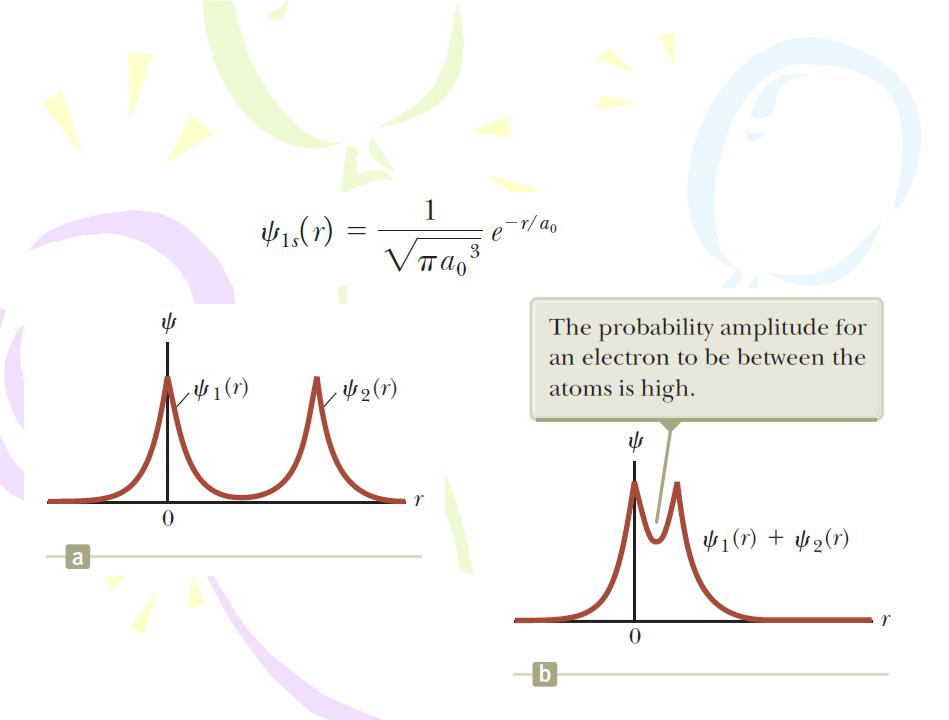
Molecular Bonds
Covalent Bonding
A covalent bond between two atoms is one in which electrons supplied by either one or both atoms are shared by the two atoms.

Molecular Bonds
Van der Waals Bonding
You might think that two neutral molecules would not interact by means of the electric force because they each have zero net charge. They are attracted to each other, however, by weak electrostatic forces called van der Waals forces.
There are three types of van der Waals forces. The first type, called the dipole–dipole force, is an interaction between two molecules each having a permanent electric dipole moment. For example, polar molecules such as HCl have permanent electric dipole moments and attract other polar molecules. 

Molecular Bonds
Van der Waals Bonding
The second type, the dipole–induced dipole force, results when a polar molecule having a permanent electric dipole moment induces a dipole moment in a nonpolar molecule. In this case, the electric field of the polar molecule creates the dipole moment in the nonpolar molecule, which then results in an attractive force between the molecules.
The third type is called the dispersion force, an attractive force that occurs between two nonpolar molecules. In this case, although the average dipole moment of a nonpolar molecule is zero, the average of the square of the dipole moment is nonzero because of charge fluctuations. Two nonpolar molecules near each other tend to have dipole moments that are correlated in time so as to produce an attractive van der Waals force.
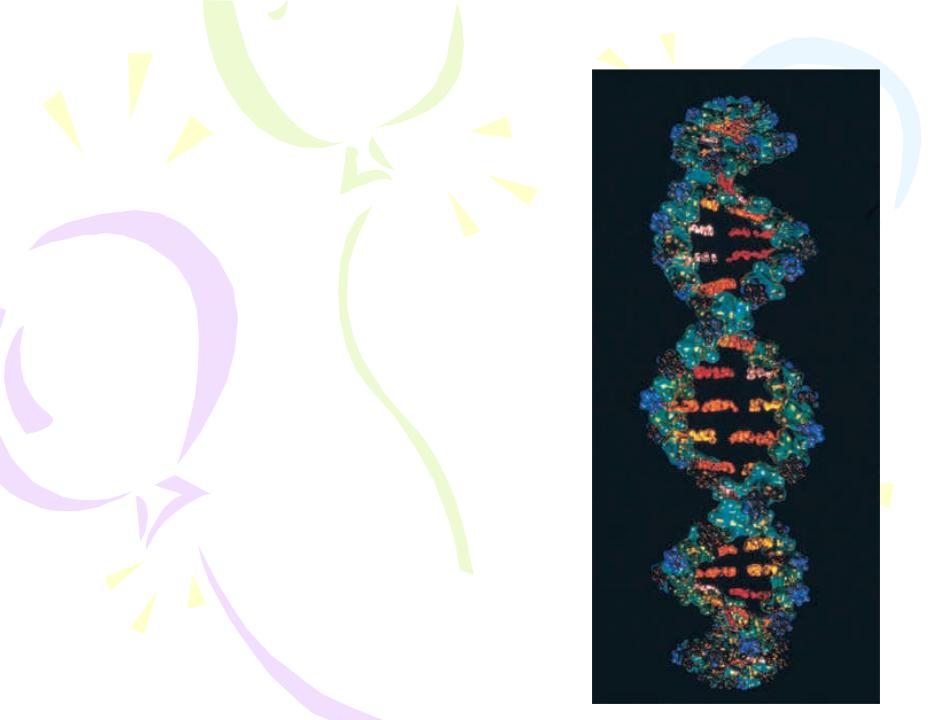
Molecular Bonds
Hydrogen Bonding
Because hydrogen has only one electron, it is expected to form a covalent bond with only one other atom within a molecule. A hydrogen atom in a given molecule can also form a second type of bond between molecules called a hydrogen bond.
DNA molecules are held together by hydrogen bonds
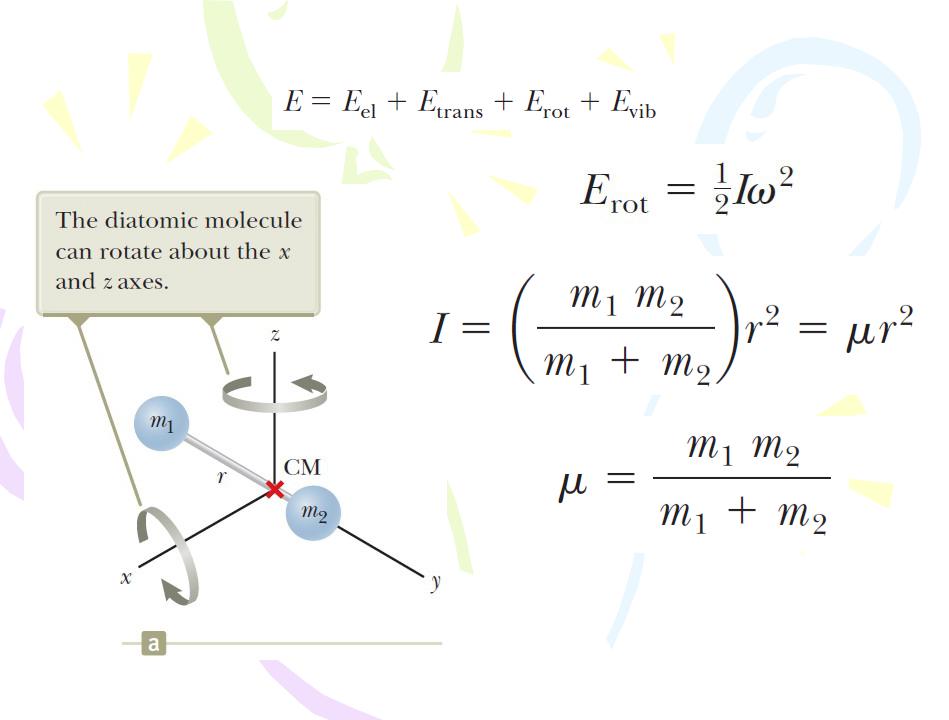
Energy States and Spectra of Molecules
Rotational Motion of Molecules
the reduced mass of the molecule
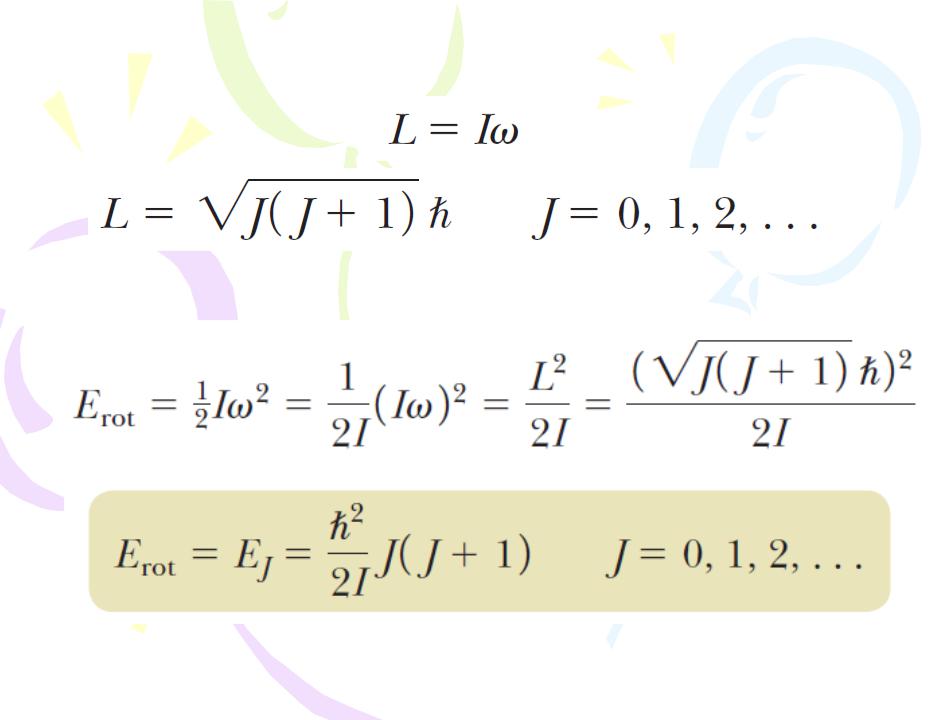
Energy States and Spectra of Molecules
Rotational Motion of Molecules
J is the rotational quantum number
